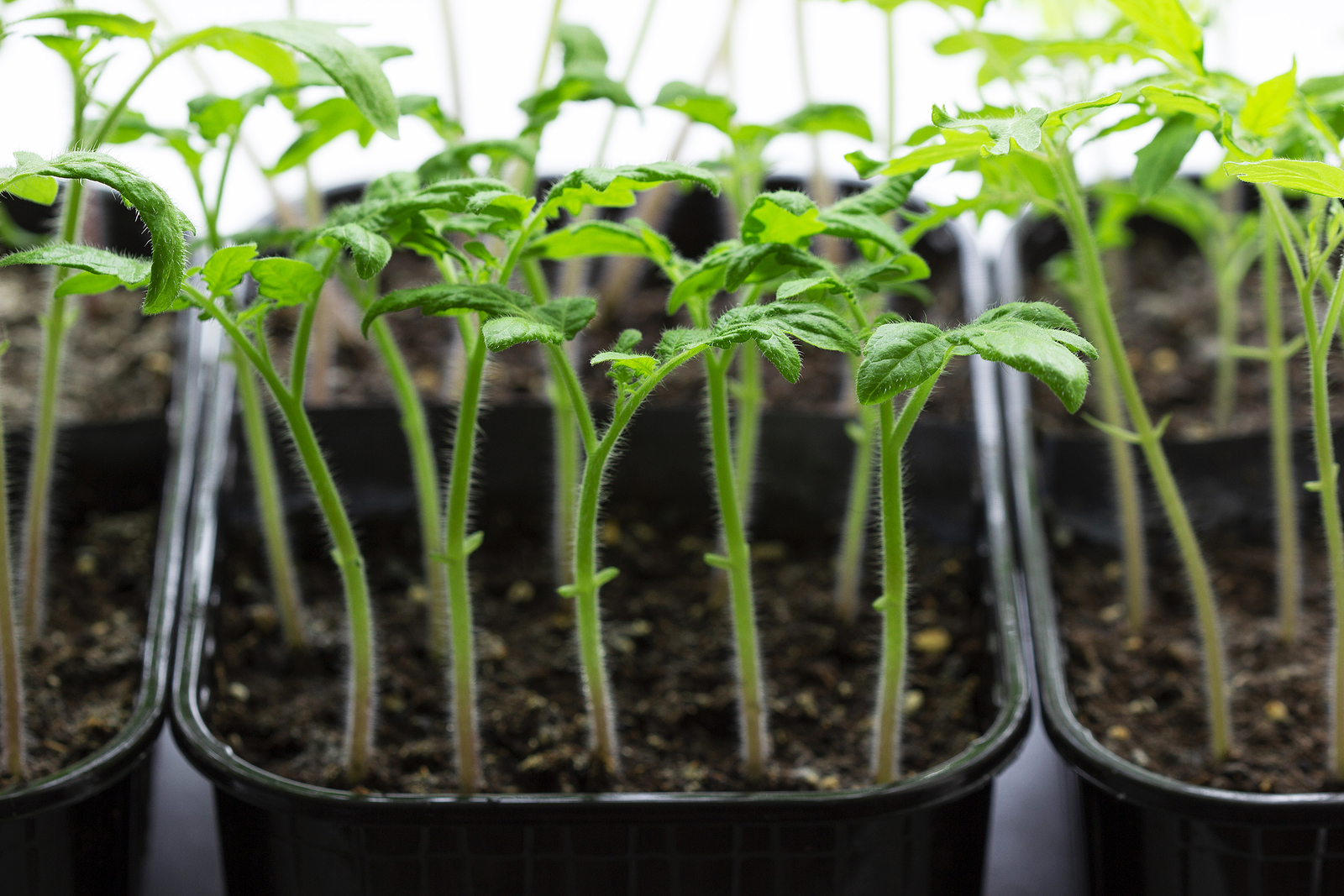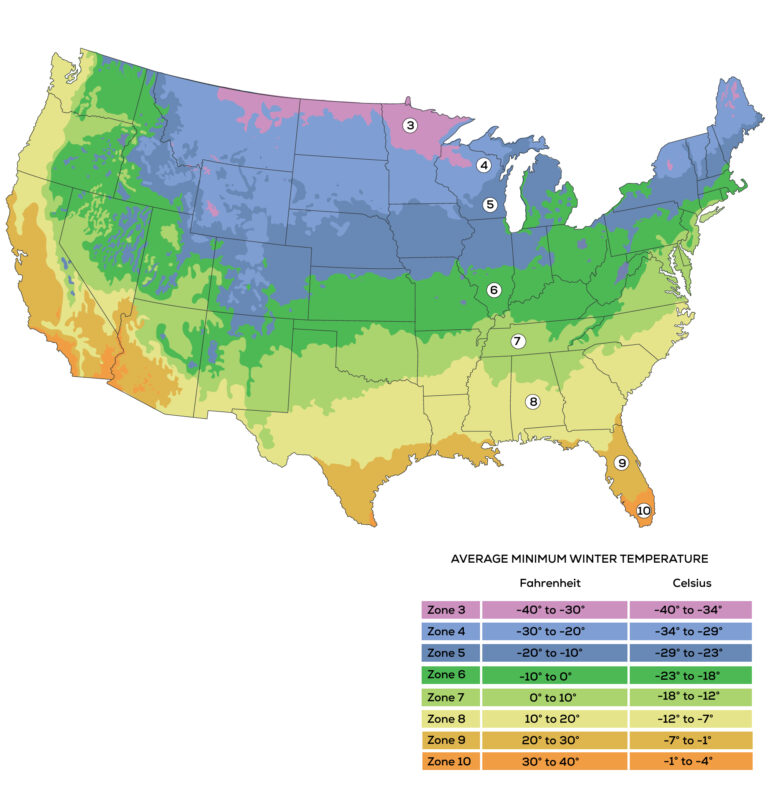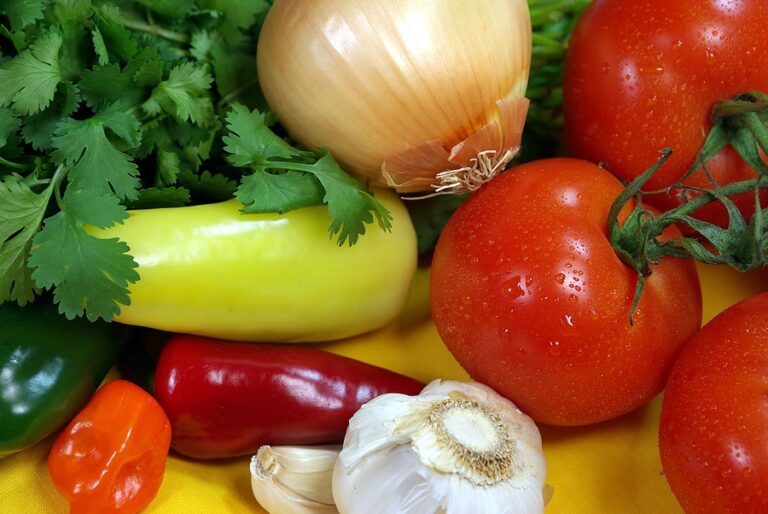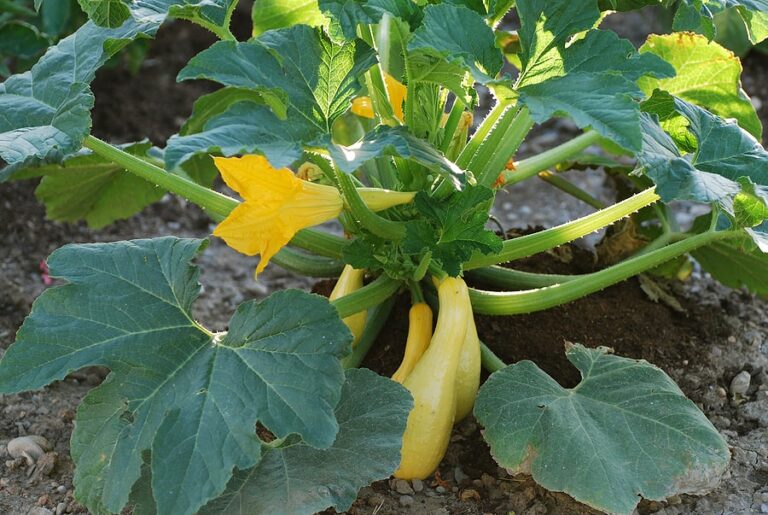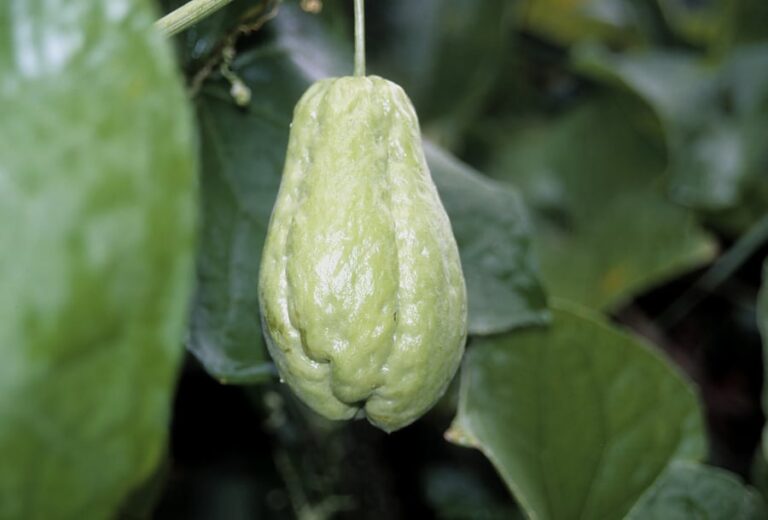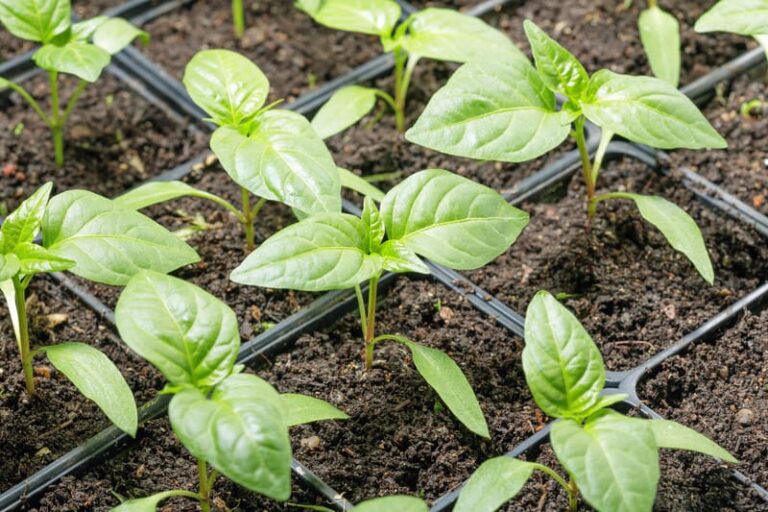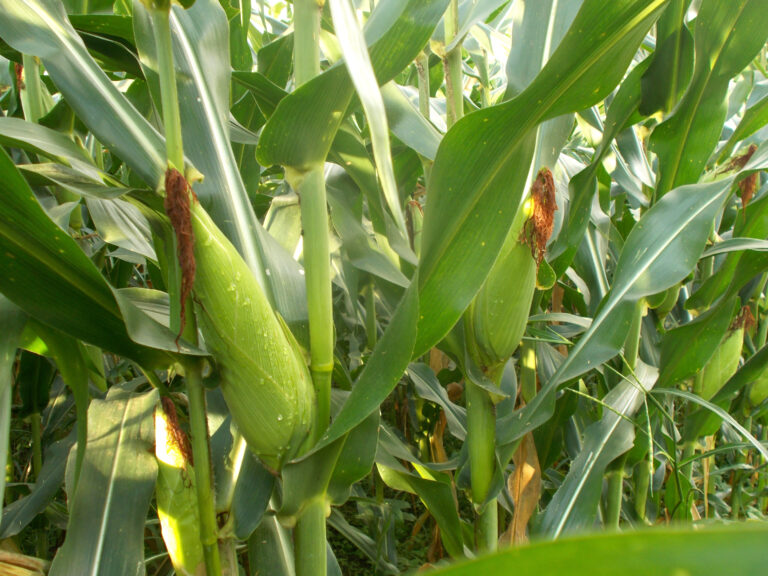When to Plant Tomatoes: A Gardener’s Guide to Timing and Success
Over the years, I’ve learned the hard way that patience is key when planting tomatoes. One spring, eager to get a head start, I set my transplants out too early—only to watch them struggle as cold nights stunted their growth. Since then, I’ve fine-tuned my approach, and I’m here to help you avoid the same mistake.
Don’t Rush the Growing Season
Tomatoes are warm-season crops that thrive when temperatures are stable. Nighttime temperatures below 55°F can cause blossoms to drop, preventing fruit from setting. If an unexpected cold snap is forecast, protect young plants with cloches, row covers, or plastic tunnels.
🌱 Pro Tip: Always plant tomatoes in the warmest spot in your garden. If your climate tends to run cool, plant them near a south- or west-facing fence or wall. The heat absorbed during the day will radiate back at night, keeping your plants warmer.
Timing Tomato Planting in Short-Season Climates
If you live in a region with a short growing season, I recommend choosing extra-hardy, early-maturing tomato varieties. Over the years, I’ve had great success with varieties like ‘Stupice’ and ‘Siberian’ that produce fruit faster and tolerate cooler conditions.
Selecting Healthy Tomato Seedlings at the Garden Center
Not all seedlings at the nursery are created equal. Look for:
✅ Plants that are 6 to 8 weeks old in 4-inch pots
✅ Short, stocky plants with dark green leaves
✅ No flowers or fruit—flowering too soon can stress the plant
✅ No roots growing out of the bottom—this means they aren’t root-bound
Transplanting Tomato Seedlings into the Garden
Soil Temperature Matters: Your garden soil should be at least 60°F before transplanting. A trick I use is placing my hand on the soil—if it still feels cold, it’s not time yet. Or, for precision, use a soil thermometer.
🌱 Hardening Off is Crucial: About one week before transplanting, start exposing your seedlings to outdoor conditions. Each day, leave them outside for gradually longer periods, starting with an hour in a shaded spot. By the end of the week, they’ll be ready for full sun exposure and outdoor conditions.
Best Time to Transplant: I’ve found that mid-afternoon is the best time to plant. The soil and air have warmed up, reducing transplant shock. Seedlings planted on chilly mornings are more prone to stunted growth.
How to Transplant Tomatoes:
- Dig a deep hole (6 inches for most plants).
- Clip off lower leaves, leaving only the top 2 or 3 sets.
- Bury the plant deeply, covering most of the stem. If your soil is cold, use the trenching method (explained below).
- Water well, and consider using a diluted B-1 transplant solution to reduce shock.
- Mulch after the soil has warmed up to retain moisture and prevent weeds.
The Trenching Method for Tomato Planting
For tall, leggy seedlings, I use a technique called trenching:
- Dig a shallow trench rather than a deep hole.
- Lay the seedling horizontally, leaving just the top leaves above the soil.
- Cover the stem with soil. The buried portion will develop strong roots.
This method has helped me rescue countless overgrown seedlings, leading to stronger plants.
Boosting Growth with Soil Amendments
Over the years, I’ve experimented with different soil amendments. Here’s what has worked best for me:
✔️ A handful of aged compost in the planting hole for slow-release nutrients
✔️ ½ handful of bone meal to encourage strong root development
✔️ Epsom salt (a pinch) to provide magnesium for healthy growth
✔️ Crushed eggshells or oyster shells to prevent blossom-end rot by adding calcium
Protecting Tomato Transplants
Tomato plants are vulnerable to temperature swings in early spring. A trick I use is wrapping plastic sheeting around tomato cages to shield young plants from harsh winds and chilly nights. Once nighttime temperatures remain above 55°F, I remove the plastic to avoid overheating.
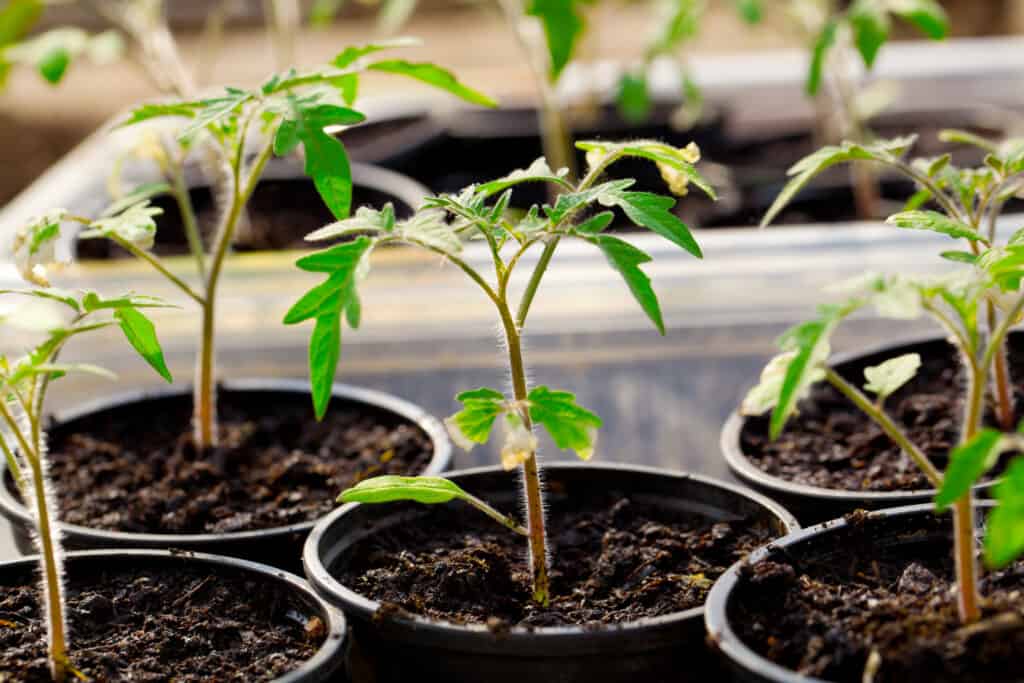
Pro Tips: When to Plant Tomatoes
Tomato seedlings are tender and easily fall prey to disease, pests, and unpredictable changes in weather. Starting tomato seeds indoors is a good strategy. Sow tomato seeds in a seed-starting mix 6 to 8 weeks before you plan to transplant them into the garden. Transplant tomato plants into the garden after the last frost in your area. Check with a nearby garden center for the average last frost date in your area and then count back 6 weeks—that’s a safe time to sow tomato seeds indoors.
Later in the season, the fruit will not color properly when night temperatures stay above 85°F, and plants will quit growing when temperatures go above 95°F.Starting tomato seeds indoors
Tomatoes need 3 to 4 months of warm, clear, fairly dry weather to produce the best.
Set 8 to 10-week-old tomato seedlings in the garden two weeks after the last frost in spring. If transplanted sooner, tomatoes must be protected from cold temperatures with hot caps or plastic tunnels.
Tomatoes need consistent night temperatures between 55°F and 75°F to set fruit. (A few varieties will set fruit at lower or higher temperatures.)
Sow two tomato seeds per pot; that way you will hedge your bet. Tomato seeds germinate at 75°F; you can use an electric seed starting mat to regulate the temperature or set your seed trays atop the refrigerator. Once the seeds are up, don’t let the temperature fall below 60°F. If both seeds emerge, use little scissors to clip away the weaker of the two once both plants have a couple of leaves. Now let your seedlings grow on for a week or two.
- Start tomato seeds indoors about 6 to 8 weeks before the last frost in spring. (Transplant tomato seedlings to the garden just after the last frost in spring.)
- Sow tomatoes in individual pots with a light potting mix. Pots should have drain holes in the bottom.
- Sow two to three seeds ½ inch deep and 1 inch (2.5 cm) apart in a small pot or flat.
- Germination soil temperature can range between 65-86°F (18-30°C); the optimum soil temperature for germinating seed is 86°F (30°C).
- Seeds can be started in a bright window or under fluorescent lights set about 2 inches (5 cm) above the plants.
- Keep seed starting mix just moist until seeds germinate.
- Germination takes 5 to 7 days at 75°F (24°C) or warmer.
- Clip away the weaker seedlings once the strongest seedling is about 2 inches (5 cm) tall.
- Grow young seedlings at 60° to 70°F (15-21°C); allow a gentle breeze from a fan to rustle over young seedlings each day so that they grow strong stems.
- About two weeks after germination seedlings can be transferred to larger 4-inch (10cm) pots; be careful not to disturb the roots. This is called potting up.
- More seed starting tips at Tomato Seed Starting Tips.
- Don’t let tomato seedlings grow on in small pots too long; they will become rootbound and stunted. Pot up if you can’t get them in the garden before they grow taller than 6 inches.
Pro Tips: Potting up Tomatoes
As your seedlings grow larger, you will likely need to give them more room for root growth. “Potting-up” means transplanting seedlings from a smaller container to the next larger container—the next deeper container. When you repot, set the seedling stems deeper than they were growing before—so the first set of leaves is just above the soil surface (you are actually burying most of the stem). New roots will grow from the buried stem and that will make for a stronger plant.
Potting up is the process of re-planting tomato seedlings that are not yet ready for the garden into larger pots. Potting up (also called potting on) allows plants to continue their steady growth until they are strong enough to withstand outdoor growing conditions.
Potting up allows for the development of strong roots and because a tomato plant can be re-potted up to its uppermost leaves, it also prevents plants from growing too leggy and accidentally snapping when moved.
Tomato seeds are commonly started indoors 6 to 8 weeks before they are transplanted into the garden.
Tomato seedlings are usually potted up about 10 days after they have sprouted—potted up from seed starting tray into a small pot, and again in another 10 days when they are about 6 to 8 inches tall—from a small pot, 4-inch container, or quart container. At potting up time, multiple plants in a container should be thinned to the strongest single plant for growing on.
Plants in quart containers can be potted up a second or third time into half-gallon or gallon containers if air and soil temperatures in the garden are not yet warm enough for tomato plants. (Tomato plants grow best when the soil and air temperatures are 65°F or greater.)
Potting up tomato seedlings–from 2-inch soil blocks to 4-inch pots and on to 6-inch pots–before transplanting to the garden will allow for larger and stronger roots: the stronger the roots, the stronger the plant.
Steps to pot up tomatoes
- Water the plants in advance and allow the soil to drain.
- Place the soil mix in the bottom of the new pot; tap the pot a couple of times to settle the soil mix.
- Snap off any leaves along the stem except for the top two sets. Simply start at soil level and work your way up the stem using your thumb and forefinger to pinch or snap away any small branches or leaves. Tomatoes grow rapidly; pinching early on will allow the plant to direct its energy to root development and away from top growth.
- Re-pot (transplant) the tomato to the larger container that will hold the plant from the bottom roots all the way to just below the topmost leaves. (A quart milk carton will work well if you are potting up from a 4-inch pot.)
- Fill the new container with soil mix and firm the soil in so that the root clump and stem make good contact with the soil mix. Give the soil a gentle watering so that the soil mix is moist but not soggy.
- Place the plant back in a bright window or greenhouse. Shelter the plant from direct sun for a day or two. As plants grow in breadth, move the pots apart so that there is good air circulation and little opportunity for disease to set in.
New roots will develop along the now-buried stem where the leaves once grew.
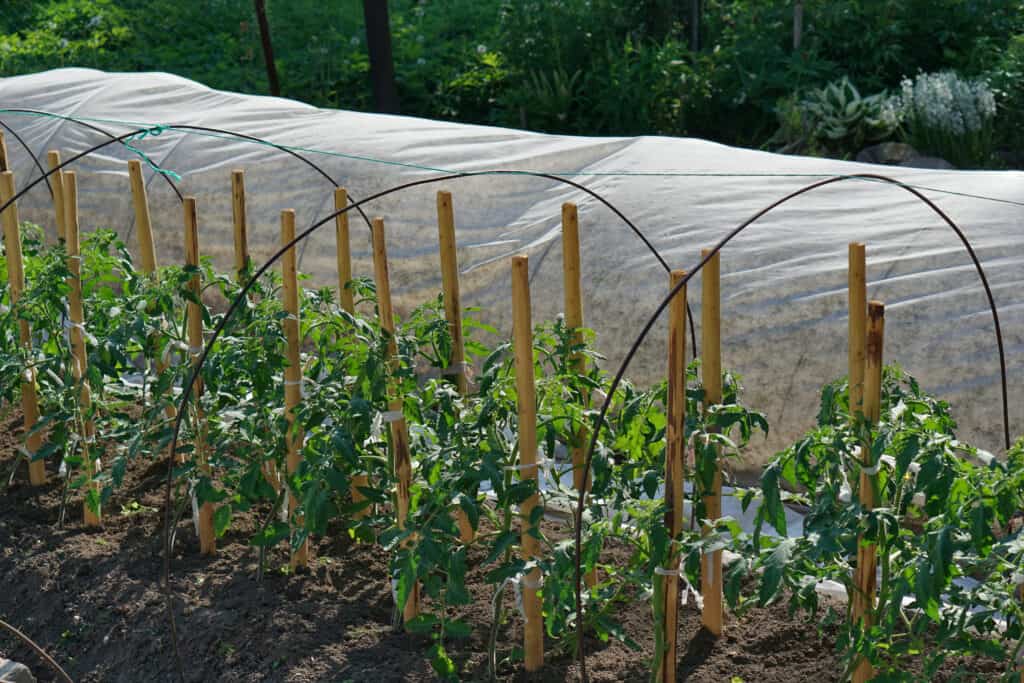
Final Thoughts
Timing is everything when it comes to growing tomatoes. Rushing the process can lead to weak plants, poor fruit production, and disappointment. By waiting for the right conditions, hardening off your seedlings, and using deep or trench planting techniques, you’ll set your tomatoes up for a strong start.
Have you had success with a particular planting technique?
Tomato Growing Hub
Start here: The Ultimate Tomato Growing Guide: From Seed to Harvest
Growing Tips
- Getting Started with Tomatoes: A Gardener’s Guide to Success
- How to Choose a Tomato for Your Garden
- Growing Early-Season Tomatoes for Great Taste
- Heirloom and Hybrid Tomatoes
Planting Tips
- Tomato Seed Starting Tips
- Mastering Tomato Seed Starting: How to Grow Strong and Healthy Plants Indoors
- When to Plant Tomatoes: A Gardener’s Guide to Timing and Success
- Plant Tomatoes for a Thriving Crop: Sun, Soil, and Spacing
- How to Transplant Tomato Seedlings: A Gardener’s Guide
- Growing Tomatoes in Containers
Tomato Care
- Watering and Feeding Tomatoes: Expert Tips for a Healthy, Productive Crop
- Best Ways to Support Your Tomato Plants
- Pinching and Pruning Tomatoes: A Gardener’s Guide to Healthier, More Productive Plants
- How to Prune Tomatoes
- Grow Tomatoes on Stakes
- Best Companion Plants for Thriving Tomatoes: What Works & What to Avoid
Pest & Disease Control
- Tomato Growing Problems: Pests, Diseases, and Solutions
- How to Prevent Blossom Drop — Tomatoes and Peppers
- How to Identify Early Blight, Late Blight, and Leaf Spot on Tomatoes
Harvest & Preparation
- When and How to Harvest Tomatoes for the Best Flavor
- How to Ripen Tomatoes
- Planting Tomatoes for a Long Harvest
- Planting Tomatoes for a Fall Harvest: How to Grow Fresh Tomatoes Before Frost
- Tomato Flavor Explained
- Nine Ways to Cook and Serve Tomatoes
Garden Planning Books at Amazon:
- Tomato Grower’s Answer Book
- Vegetable Garden Almanac & Planner
- Kitchen Garden Grower’s Guide Vegetable Encyclopedia
- Vegetable Garden Grower’s Guide
Books to help you grow:

